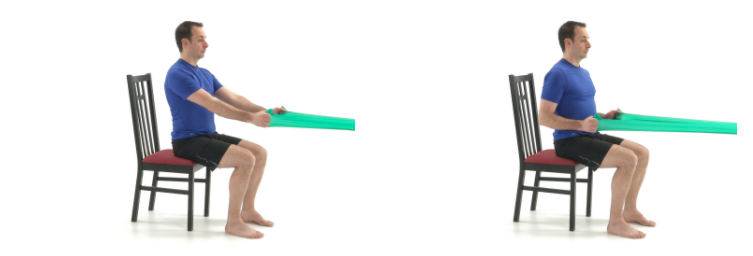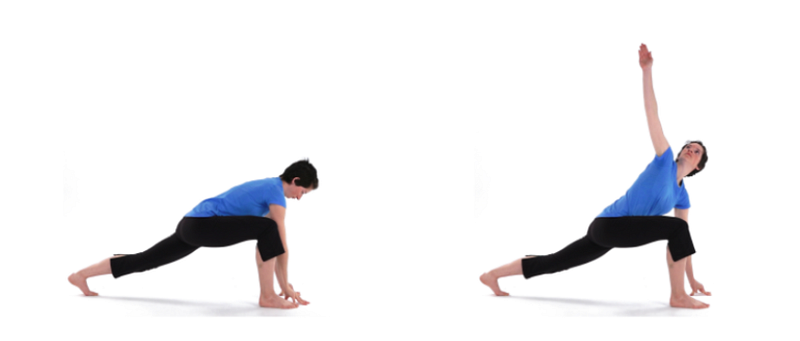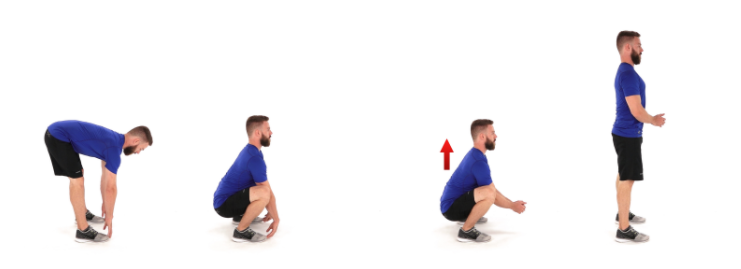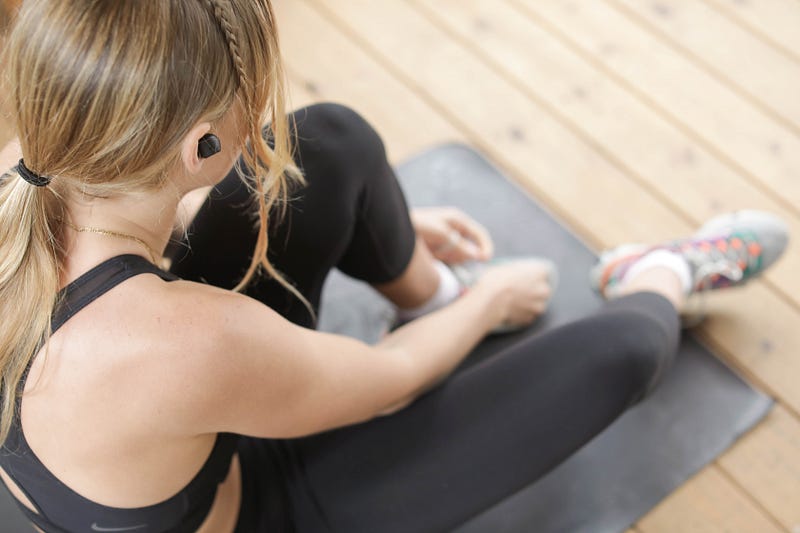Posture Braces: Myths and Realities for a Healthier Back
Written on
Understanding Posture Braces
In my experience working at a chiropractic clinic, I often encounter the question: "Are posture braces a gimmick or a genuine solution?" The answer might surprise you…

You might have seen advertisements claiming, “Want to look slimmer and healthier? Simply wear this back brace for just 30 minutes each day for instant results!” While it may sound outrageous, such claims do grab attention. Numerous companies are quickly entering the market, promising to alleviate our growing back pain epidemic. However, before rushing out to purchase one of these trendy devices, it’s essential to understand some critical information.
You won’t find any of the valuable insights I’m about to share on the packaging of your back brace; in fact, it may not even appear in the fine print. Why? Because genuine health advice rarely sells. That’s just the unfortunate reality in North America. But don’t worry, you can avoid these misconceptions, save money, and safeguard your well-being from these marketing ploys.
Let’s dive into everything you should know about posture braces and effective, long-term strategies for managing back pain.
What Are Posture Braces Really For?
I want to clarify that not all braces are inherently detrimental. If a healthcare professional has recommended a brace for a specific injury, that’s perfectly fine. In cases of severe spinal cord injuries, braces can provide necessary support for non-functional body parts. This article, however, focuses on devices marketed to enhance posture. As a registered kinesiologist at a chiropractic office, I hope my insights will prove valuable. If you have questions or concerns, feel free to leave a comment or consult your local physiotherapist.
The primary function of these posture braces is straightforward: they are designed to pull your shoulders back and prevent you from slumping forward. Essentially, they do the work for you, allowing you to be less mindful of your posture. Sounds appealing, doesn’t it? Unfortunately, this is where the problems begin.
If you're relying on a device to "correct" your posture, your postural muscles are not being engaged at all. Over time, these muscles will weaken significantly. Moreover, your postural endurance will diminish since you're not giving your body the essential training it needs to maintain these positions. This approach is fundamentally flawed and unsustainable.
Ironically, posture braces may lead to the opposite of what you want: you could end up weaker, tighter, and more hunched.
Finding the Right Solution
There’s no magical solution for back pain, but adopting the right lifestyle habits can set you on the path to recovery. To break it down, here are three vital strategies that can significantly enhance your back health and posture. Luckily, these habits are simple and can fit into any lifestyle.
Strength Training
To improve your posture, focus on strengthening your postural muscles. It’s as simple as that. Don’t get overwhelmed by the multitude of “correctional” exercises; while doing countless chin tucks might help somewhat, it’s not the answer. As a kinesiologist, I recommend concentrating on two key exercises: the row and the deadlift, along with the other two tips that follow.
I always incorporate these two movements into my clients’ routines because they build overall strength and stability, particularly in the posterior chain. Other effective exercises include lat pulldowns, squats, and side planks. Even if you're new to the gym, modifications exist for everyone, regardless of experience level.
Row
Cues: 2 x 15 reps. Secure a resistance band around an anchor or door. Position a chair to mimic a seated row. Engage your core, exhaling as you pull the band towards you, driving your elbows back and squeezing your shoulder blades together. Hold for 1-2 seconds at the peak contraction before releasing. Maintain shoulder position to prevent neck strain.
For progression, increase resistance, try a TRX row, or use a seated row machine. Alternatives include the bent-over row and single-arm row.
Deadlift
Cues: 2 x 15-20 reps. Start with light weights, especially if recovering from an injury. Use two equal household items of moderate weight if you lack access to weights. Engage your core, ensuring your pelvis and ribs are aligned. Slowly hinge at the hips, lowering the weights to knee height. Once your hamstrings stretch, bend your knees until the weights rest on the floor or just above.
To return, extend your knees and drive your glutes forward as you lift the weights. Remember to exhale during this phase and keep your spine neutral.
For modifications, consider a Romanian deadlift (RDL) or single-leg deadlift. To progress, use a barbell or try a deficit deadlift. Always listen to your body and push only as far as feels comfortable.
For a deeper dive into effective resistance exercises for posture and back pain, check out my extensive article here.
Mobility Work
Enhancing your posture also requires improving your range of motion. Many people suffer from tightness and rounding because they hesitate to move beyond their usual positions. Thankfully, this can be easily remedied.
Start with the following three movements, moving slowly and only to the extent of your pain-free range of motion (which will improve over time). Regular movement is essential for the health of your discs and tissues. To maximize spinal wellness, make this a daily practice!
Spiderman Lunges
Cues: 5 reps per side. Begin in a push-up position. Step forward with one foot, placing the opposite hand beside it. Raise the other arm vertically for five reps before switching sides. Follow your thumb with your eyes to encourage neck rotation. Take your time; each rep should last about three seconds.
Lumbar Rocks
Cues: 10-15 reps per side. Lie on your back with bent knees at approximately 90 degrees. Raise your arms behind your head and gently rock your knees from side to side. Start small and gradually increase your range of motion as you warm up. This is an excellent way to promote movement in the lower back and pelvis.
Toe Touch Squat-to-Stand
Cues: 10-15 reps. Hinge at your hips and lower your arms to the floor. Don’t worry if you can’t reach your toes; just do your best. Next, drop into a squat by bending your knees, lowering your hips, and raising your chest. Rest in the deep squat for one to two seconds, then rise back to standing.
In the realm of spinal health, movement is truly medicine!
Improving Sedentary Habits
While we’ve discussed posture extensively, one last point remains: posture isn’t the be-all and end-all. The healthcare industry places a significant emphasis on achieving “perfect posture,” but that’s not always healthy. Instead of striving to sit upright like a meerkat all day, aim to change your position every 20-30 minutes. This habit will enhance the health of your spinal discs and keep your muscles happier. If you’re interested in the intricacies of posture physiology, I have a guide for you here.
To reduce prolonged periods of inactivity, set reminders for standing breaks at work, or take a walk during lunch instead of staying at your desk. Whatever you choose, commit to moving more throughout your day, and you’ll likely feel better for it.
Final Thoughts
If you’ve been considering a posture brace, it’s time to rethink your strategies. Purchasing flashy gadgets may worsen your condition by weakening your muscles and diminishing your endurance. Instead of falling for marketing tricks, take charge of your health through strength training, mobility exercises, and reducing sedentary behavior. By committing to these habits long-term, you’ll be far ahead of those relying on a piece of plastic to maintain their posture.
Take control of your health and start training today! You can do this.
-David Liira, Kinesiologist

You’ve just read another insightful post from In Fitness And In Health, a community dedicated to sharing knowledge, lessons, and tips for a happier, healthier life. If you’d like to receive more stories like this, join our newsletter here.
In this video, a Houston chiropractor reveals whether posture braces are effective or just a marketing gimmick. Learn the truth about their benefits and drawbacks.
This video discusses the pros and cons of wearing a posture brace. Should you use one? Find out what experts recommend for maintaining good posture.





